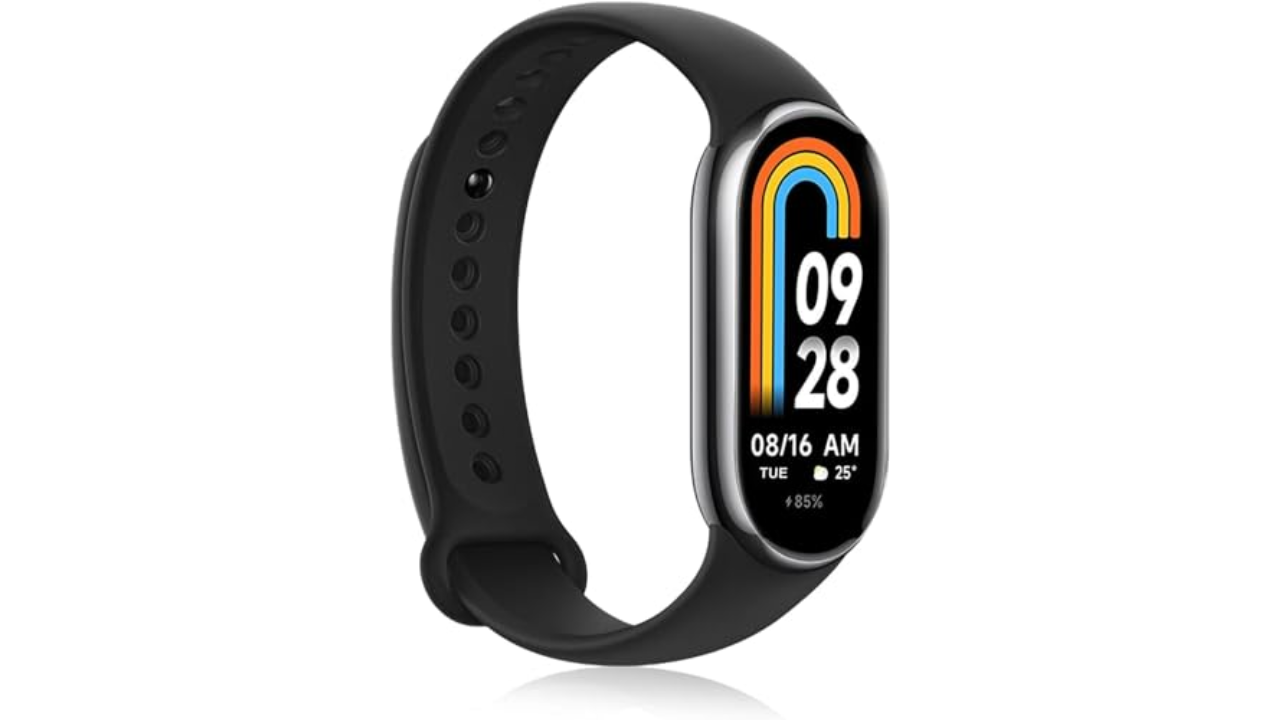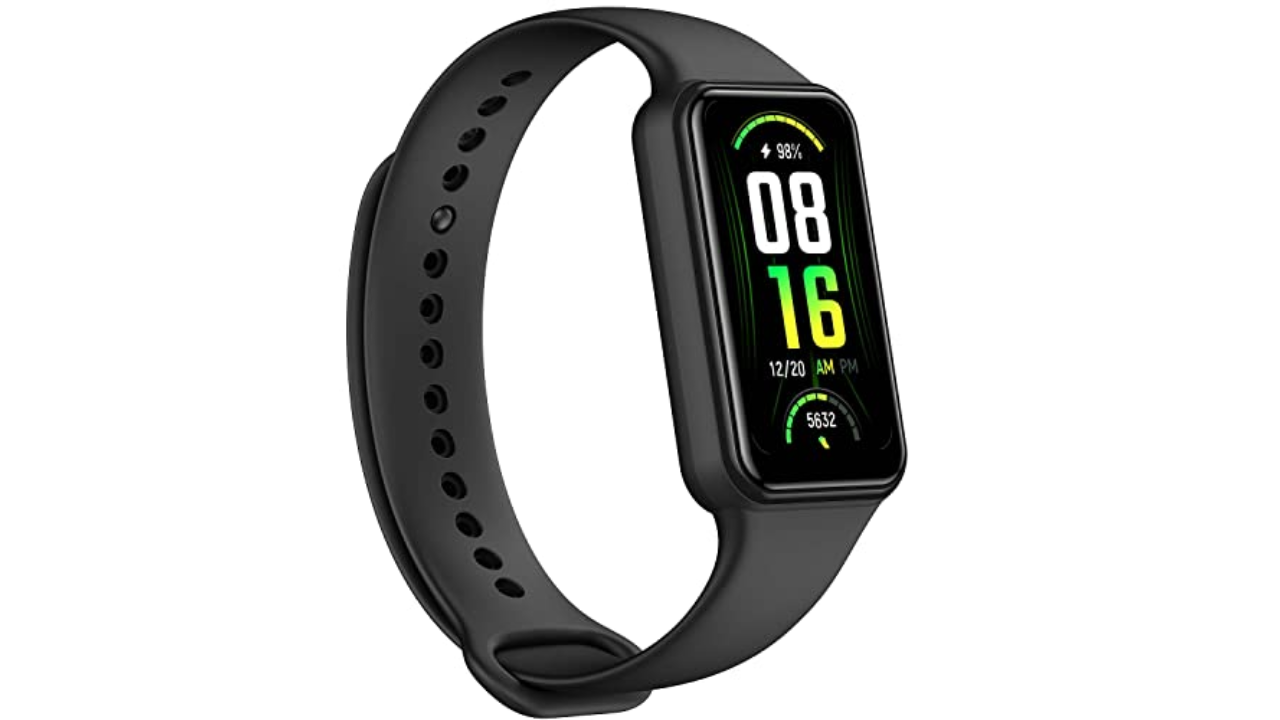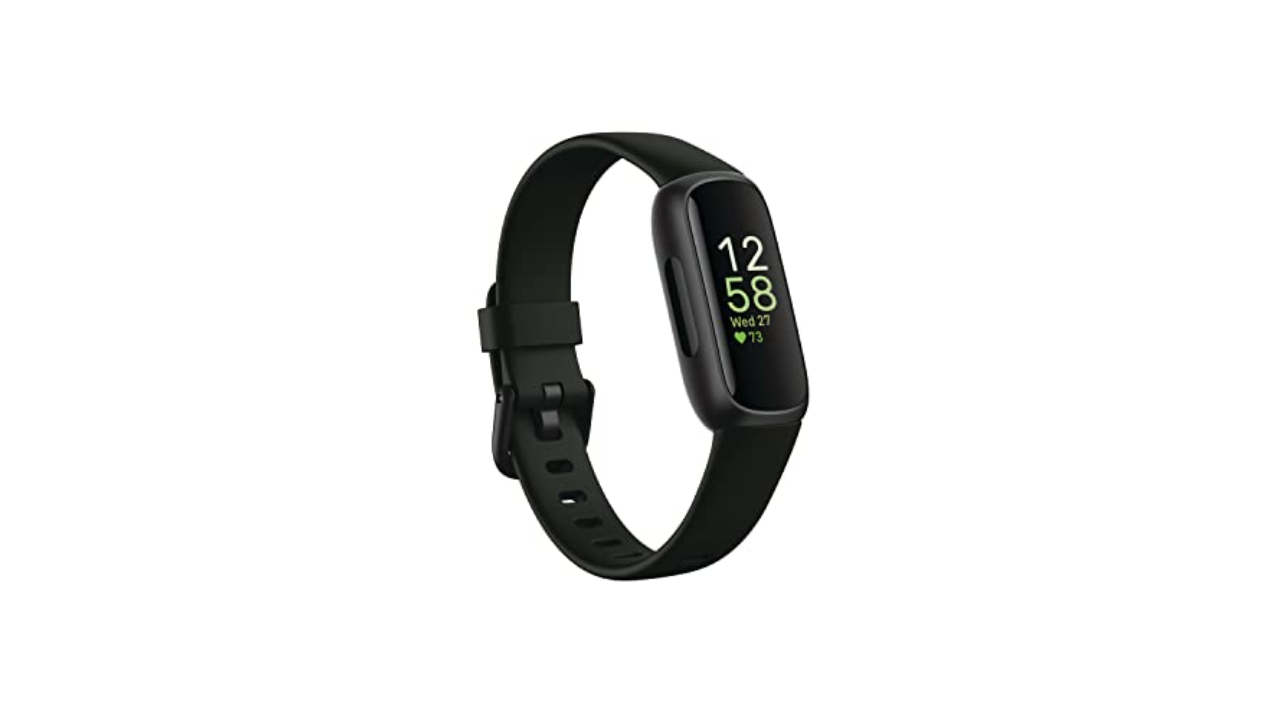Achieving your fitness goals doesn’t have to be expensive or complicated. Keeping track of your progress will be crucial, but not everyone needs to drop hundreds of dollars on the best smartwatches out there. The average affordable tracker might offer just the right tools to help kickstart your health journey, like a heart rate monitor, sleep quality data and so on. And, after testing a number of affordable fitness trackers, I can say with confidence that you might be surprised by how much a $100 (or less) wearable can do — a welcomed treat for those who don’t want to spend a ton of cash on an Apple Watch. Many of these gadgets go well beyond being glorified pedometers, providing in-depth reports on how you’re sleeping at night or giving you a breakdown of your heart rate variability during a workout. But given their price, there will be some sacrifices. To help you decide which is right for you, I tested a number of the best cheap fitness trackers available today to find the ones that are worth your money.
What to look for in a cheap fitness tracker
All of the best fitness trackers should have at least three features: a program to track workouts or movement of some sort, the option to monitor and collect sleep data and the ability to measure health metrics like heart rate and blood oxygen levels (though, the readings might not be super accurate). Don’t set your sights too high and expect metrics like blood pressure monitoring; for that, you’d need to invest in a more expensive wearable like a Samsung Galaxy Watch, which will set you back over $400.
Fitness features
A cheap workout tracker can be great for someone looking to keep tabs on small, achievable goals like 10,000 steps before sundown or 30 minutes of a HIIT workout to get your heart rate peaking. An experienced long-distance runner looking to train for a triathlon might opt for a more expensive device that can measure cadence or ground contact time, and can track more customizable workouts, offer different sports modes or give deeper insights into performance data.
At the very least, a budget workout tracker should be able to offer fitness tracking features beyond walking and running — otherwise, it would just be a pedometer. The number of activities a device will recognize varies. Some will get funky with it and consider skateboarding a workout, while others won’t be able to track a jumping jack.
At this price, you can expect a device to measure a mix of cardio, machine workouts and strength training. With each, you might get a numerical or visual breakdown of heart rate activity, overall pace, and calories burned per session. Although some cheap trackers can offer a really good overview of heart rate zone activity during a workout, a more technically advanced device might be able to go a step further and explain what your results mean and coach you on how to keep your heart rate in a specific bracket so that you can burn more fat per workout. I found that the more budget-friendly the device, the more likely it is that a tracker will fall short when it comes to smart counseling or offering predictive insights beyond a given workout. If a budget tracker does happen to offer some semblance of a coaching program, you can expect it to sit behind a paywall.
Workout tracking and planning your recovery is just as essential to any fitness journey. A sub-$100 device should be able to tell you how long you’ve slept and provide a breakdown of deep, light and REM sleep activity. It’s not a guarantee that you will get a sleep “score” or insights on how to get better rest — that data is usually found on more expensive wearables. Also, because these trackers aren’t designed for bedtime specifically — be mindful of comfort. The bands and watch face on a budget fitness tracker may not be ideal for getting some good shut-eye.
Connectivity and practicality
Not all activity trackers, budget-friendly or not, are designed to seamlessly integrate with a smartphone. The trackers tested for this roundup can’t directly make calls or send texts to contacts on a paired smartphone. They can, however, display and dismiss incoming calls and notifications via a Bluetooth connection. You can forget about checking your email or paying for a coffee from your wrist using these more affordable devices.
Most cheap fitness trackers also won’t include a built-in GPS. Instead, they usually depend on a paired smartphone to gather location data. The drawback of using a fitness tracker without GPS is that it might not provide as precise for tracking distance or pace. You also can’t use a budget tracker to get turn-by-turn directions during a walk or while running errands. For the more outdoorsy consumers, having GPS could be a key safety feature if you want this kind of functionality at your fingertips.
Design
You also might find that an inexpensive fitness tracker is harder to navigate than a more advanced smartwatch. Whether it be a screen size issue or simply not having a smart enough interface, don’t expect every feature to be one that you can engage with directly on your wrist. Oftentimes, you will need to pull out your smartphone to log information or access more in-depth health data.
The quality and build of displays and bands will also vary in this category. Don’t expect the highest resolution OLED displays or the fanciest materials in the bands. But you can expect some level of sweat and water resistance.
Best cheap fitness trackers for 2024
Tracks: Heart rate, sleep, stress, blood oxygen, women’s health | Supported Operating System: Android 6.0 and above, iOS 12.0 and above | Memory: 100GB | Screen size: 1.62” | Waterproof: 5ATM water resistant | GPS: No | Battery life: 16 days
The Xiaomi Smart Band 8 stood out on many fronts — it not only has the easiest interface to navigate when recording workouts, it also has the most comfortable band to sleep in. This device has pretty much everything you would expect on a fitness tracker, and it comes at a price that’s hard to beat. The 1.62-inch, 192 x 490 pill-shaped AMOLED display is full color and shines pretty bright both indoors and out. Although it doesn’t have a physical navigation button, you can move through the UI by swiping up and down, or left and right.
The Smart Band 8 is quite comfortable, but what really made it secure the top slot is how detailed its workout reports were. Unlike some of the other trackers we tested, the Smart Band 8 does not require you to download any exercises from its companion app. Meaning, you can get right into tracking exercises as niche as skiing. When a workout is complete, you get all the information you’d want on your wrist – from heart rate readings to pace and speed, to calories burned and more. It may sound basic, but some of the other trackers we tested only report step count and distance traveled after a walk. The amount of time spent in each heart rate zone will appear in your summary, from light, intensive, aerobic to anaerobic.
Xiaomi’s tracker also has a unique “Pebble” mode, which allows you to clip on the tracker to shoelaces using a special case to gather running and cycling data. Using Pebble mode, you can get a better breakdown of how you performed during a sprint -– namely stats like flight ratio and ground contact time, along with general information about your running form.
The tracker was easy to fall asleep with because of how lightweight and comfortable it is. The do-not-disturb feature is easy to turn on from the watch face and I didn’t have any issues with the screen waking me up at night. The sleep insights after wearing it overnight impressed me with their detail. Right on my wrist, I was able to learn how long I slept and also got a detailed sleep graph that showed me when I was in light and deep sleep. This was all free, on my wrist and it was further broken down for me in the Mi app. I also was able to gather information on my average HR during sleep and my breathing patterns.
Also, importantly, Xiamo’s impressive battery claims checked out – the Smart Band 8 only needs 30 minutes on a charger before being fueled up for about two weeks of use. I never worried about not being able to track my activity or sleep.
- Easy to navigate interface
- Full color display
- Comfortable design that supports Pebble mode
- Good fitness tracking and sleep monitoring
- Long battery life
- No physical navigation button
Tracks: Heart rate, sleep, stress, blood oxygen, women’s health | Supported Operating System: Android 7.0 and above, iOS 12.0 and above | Memory: 2.3GB | Screen size: 1.47” | Waterproof: 5ATM water resistant | GPS: No | Battery life: 18 days
The Amazfit Band 7, like the Xiaomi Band 8, has all of the workouts you can track pre-loaded on your wrist. It also has a unique interface that allows you to set a custom goal, like burning 500 calories, before starting a workout. Plus, it features a generous 18 days of battery life (or more if you enable battery-saver mode).
The Amazfit band has a special scoring system called PAI, which stands for “Personal Activity Intelligence.” This metric is derived from your heart rate during all activities (even ones that don’t involve tracked workouts) and gives you a numeric score from 1 to 100. You want to get your score as close to 100 as possible, through workouts and rest, to keep your overall heart health strong. Like the Xiaomi Smart Band 8, the Amazfit Band 7 gives a user a breakdown of their overall heart rate zone activity on the watch face.
The watch also has a unique “one tap measure” that gives you insights into your heart rate, blood oxygen levels and even a stress score based on your heart rate variability.
There are some downsides to the Band 7, though, namely that it is considerably slower than the Xiaomi Smart Band 8 when it comes to starting and ending exercise sessions. It also does not have a physical navigation button, making it sometimes hard to exit a page. That would have been something I could have overlooked if the watch’s display had been a bit on par with the Xiaomi Band 8’s. Despite having an AMOLED color display, the Band 7’s screen was sometimes hard to view even indoors.
It does get brownie points for being a bit more comfortable to sleep in than some of the others we tested, but it still takes some getting used to. If you do sleep with the Band 7 for a week though, you can get an in-depth sleep analysis about your susceptibility for conditions like sleep apnea. The caveat is that you need to pay a premium for this more detailed sleep report. Through the Zepp app (formerly Amazfit) you can pay $10 monthly or $50 annually for a premium subscription, which also includes meditation content and an AI sleep coach.
- Supports custom goal setting per workout
- Good activity and sleep tracking
- Comfortable design
- Slow performance
- No physical navigation button
Tracks: Heart rate, sleep, stress, blood oxygen, women’s health | Supported Operating System: Android 10.0 and above, iOS 15.0 and above | Memory: 6.4GB | Screen size: 0.7” | Waterproof: 5ATM water resistant | GPS: No | Battery life: 10 days
I expected more out of the Fitbit Inspire 3 because, well, it’s Fitbit. Also, considering it’s the most expensive tracker on the list, you would think you would get more. The tracker does serve its purpose -– it can record your workouts. However, only 6 kinds of activities can be tracked at a time. To add more niche exercises like a weight-lifting routine, you need to open the Fitbit app and swap one exercise widget for another. It does give a rudimentary breakdown of your calories burned, heart rate, and all of the things you would normally want to get in a performance report. In comparison to the Fitbit Charge 6, the Fitbit Inspire 3 doesn’t boast a built-in GPS, so you have to take your phone with you to accurately record pace or distance.
One thing I do appreciate about the Fitbit Inspire 3 is its Active Zone Minute breakdown after a workout is tracked. This is a feature unique to Fitbit that calculates how hard your workouts were and how much fat you burned in the process. The app does a good job of breaking down other health metrics during exercise and can tell you how much recovery you need before your next workout. It’s nice to have that information, but the fact that you need to pull out your phone to get deeper insights can be a nuisance.
The Inspire 3 also does not allow you to directly log menstrual cycle data on it, whereas the Xiaomi Band 8 and Amazfit Band 7 do. The battery life on this tracker is on par with what the company says, though. It charges to full in under 45 minutes and dies after about 10 days of use. So in between tracking workouts and gathering sleep data, I did not have to worry much about missing a night of sleep tracking to charge it overnight. The Fitbit Inspire 3 is comfortable to sleep with, maybe even slightly more comfortable than the Amazfit Band 7, but the fact that its sleep coaching is only available for premium Fitbit subscribers does take away from the appeal.
- Supports Active Zone Minutes tracking
- Good battery life
- Comfortable design
- Cannot manually add menstrual cycle data directly from the band
- Lots of data hidden behind Fitbit Premium paywall
Other cheap fitness trackers we tested
Wyze Watch 47c
I didn’t have high expectations of the Wyze Watch 47c, but I was shocked at how little this tracker can do. The 47c can only track walks and runs. It has a dedicated widget, a small logo of a man running, and when you tap it, it begins measuring your pace, heart rate, calories burned and mileage. It does not auto-detect or auto-pause workouts and it doesn’t differentiate between a run and walk. Most importantly, this device can’t track any other exercises. It’s basically a glorified pedometer.
The 47c was also my least favorite to sleep with, mainly because the square watch face is so large and heavy. Even if I did manage to sleep through the night with it on, it only gave me a basic sleep report.
Garmin vivofit 4
The Garmin vivofit 4 has a tiny display that is not a touchscreen and all navigation happens through one button. The watch face is impossible to read outdoors and the exercise widget is also very finicky. To start tracking a run, you have to hold down the main button and flip through some pages until you get to a moving person icon. Once there, you have to press the bottom right corner of the bar and hold down and if you press for too long or in the wrong spot, it’ll switch to another page, like a stopwatch. It’s incredibly frustrating.
Once you start a run though, it will start tracking your steps, your distance — and that’s pretty much it. It does not auto-detect or auto-pause workouts. It doesn’t alert you of any mileage or calorie milestones.
Trending Products








